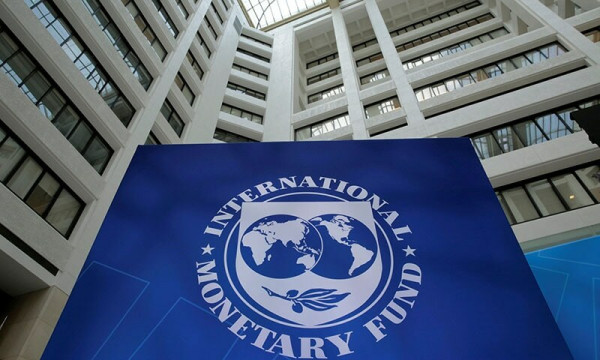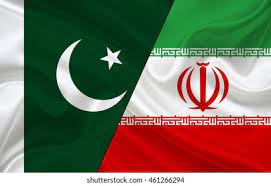ISLAMABAD: The International Monetary Fund (IMF) has projected that Pakistan’s economic growth rate for the fiscal year 2025-26 will be around 3.6%, a figure notably lower than the government’s target of 4.2%. The projection, which reflects a cautious global financial outlook toward Pakistan’s economy, comes at a time when the country is undertaking structural reforms to stabilize its fiscal position, attract foreign investment, and enhance macroeconomic resilience.
The IMF’s conservative estimate stands in contrast with the Pakistani government’s more optimistic forecast, indicating the ongoing challenges facing the South Asian nation. Persistent fiscal deficits, circular debt in the energy sector, and a fragile external balance continue to hinder stronger economic performance, despite some recent signs of recovery.
Government Engages Global Diplomats, Seeks Support and Investment
In a strategic move to bolster international confidence, the government recently held an economic briefing session for foreign diplomats, aiming to present Pakistan’s economic reforms and invite investment in key sectors.
The session was jointly led by Federal Minister for Energy Owais Leghari and Minister of State for Finance Bilal Kayani, who addressed ambassadors and representatives from major economic partners including the United States, United Kingdom, European Union, Saudi Arabia, Japan, and others.
Purpose of the Briefing
The key objectives of the briefing were:
- To highlight Pakistan’s recent economic stabilization efforts.
- To present the progress in energy sector reforms and fiscal management.
- To invite foreign direct investment (FDI) across multiple sectors including energy, infrastructure, manufacturing, and technology.
- To position Pakistan as an emerging market with improved macroeconomic indicators and investment potential.
Macroeconomic Overview: Indicators of Economic Improvement
During the session, the government outlined several indicators it claimed demonstrated positive economic momentum despite challenges.
GDP Growth Performance
- FY 2024-25 GDP growth: 2.7%
- Projected GDP growth for FY 2025-26: Government target – 4.2%, IMF forecast – 3.6%
Although modest, the 2.7% growth in the outgoing fiscal year was framed as a recovery from previous contractionary periods caused by external shocks such as high inflation, import restrictions, and global economic volatility.
Per Capita Income on the Rise
- Increase in per capita income was also mentioned, though specific figures were not disclosed. It was cited as evidence of improvement in household-level prosperity and consumer resilience.
Inflation and Monetary Policy
One of the most noteworthy achievements, as emphasized by officials, was the significant reduction in inflation:
- Inflation dropped to 4.5% – a dramatic improvement compared to inflation rates exceeding 30% in 2023.
- The State Bank of Pakistan (SBP) also reduced the policy interest rate from 22% to 11%, a move aimed at stimulating investment and economic activity.
These policy shifts suggest that price stabilization efforts have begun to yield tangible results, providing breathing space for businesses and households.
External Account Recovery
- Current account surplus of $2.1 billion was achieved, attributed to a sharp reduction in imports and an uptick in remittances and exports.
- This surplus marks a rare moment of balance in Pakistan’s external account, which has long suffered from chronic deficits and dependence on foreign financing.
Energy Sector: The Heart of Structural Reforms
A major focus of the briefing was the government’s plan to reform the energy sector, long regarded as one of the largest sources of fiscal burden and inefficiency in Pakistan’s economy.
Circular Debt Crisis
Officials disclosed that the government is seeking new loans worth Rs 1.25 trillion to address the Rs 2.4 trillion circular debt. This circular debt – which represents unpaid dues between power producers, distributors, and fuel suppliers – has threatened the sustainability of the power sector for years.
- The burden of the new loan is expected to be transferred to consumers via a Rs 3.24 per unit surcharge in electricity tariffs.
- This unpopular measure, however, is deemed essential to avert a complete collapse of the sector.
Privatization of Distribution Companies
To reduce losses and improve service delivery, the government plans to privatize several power distribution companies (DISCOs).
- A target has been set to hand over the first three distribution companies to the private sector by 2026.
- This move aligns with recommendations from international lenders, including the IMF and the World Bank, who have long advocated for reducing government footprint in the energy sector.
FBR Reforms: Promises of Greater Revenue Mobilization
During the session, Chairman of the Federal Board of Revenue (FBR) Rashid Langrial presented what he called a “real increase of 46%” in tax collections as a result of recent reforms.
Key Features of FBR’s Reform Agenda:
- Expansion of the tax base through digital tracking and enforcement.
- Crackdown on undocumented businesses and non-filers.
- Simplification of tax filing procedures to enhance compliance.
- Automation and digitization of customs and income tax systems.
This uptick in revenue collection is critical, as Pakistan’s tax-to-GDP ratio remains one of the lowest in the region, hampering the government’s ability to invest in development and social programs.
Attracting Global Investment: $2–3 Billion Sought
In a direct appeal to the assembled diplomats and economic attachés, the government invited foreign investors to contribute $2–3 billion in Pakistan’s energy, infrastructure, technology, and industrial sectors.
Sectors Identified for Investment:
- Renewable energy projects including solar and wind farms.
- Public-private partnerships (PPPs) in urban infrastructure and transport.
- Manufacturing and industrial zones under the Special Economic Zones (SEZs) initiative.
- Technology and innovation hubs to support Pakistan’s emerging digital economy.
The government hopes that by stabilizing macroeconomic indicators and reforming structural weaknesses, Pakistan can once again become a favorable destination for FDI, especially for Gulf and East Asian investors.
Challenges Ahead: IMF’s Reservations and Investor Skepticism
Despite the government’s efforts to present a reformist image, the IMF’s more conservative forecast signals underlying concerns that remain unresolved.
Key Concerns:
- Low private investment levels due to high cost of doing business.
- Structural deficits in the public sector.
- Inconsistent implementation of reforms.
- Political uncertainty which deters long-term investments.
International investors remain cautious, often citing policy reversals, delays in privatization, and regulatory bottlenecks as major hurdles to engaging with the Pakistani economy.
Conclusion: Pakistan Walking a Tightrope Between Optimism and Reality
Pakistan’s recent outreach to foreign diplomats and investors, paired with reform announcements and macroeconomic improvements, reflect a renewed sense of urgency in tackling its economic challenges. While the government projects 4.2% growth for the upcoming fiscal year, the IMF’s 3.6% forecast serves as a reminder that fiscal discipline, sustained reforms, and political stability will be key to realizing any growth targets.
The success of the energy reforms, the actual privatization of power companies, real revenue mobilization through FBR reforms, and investor-friendly regulatory frameworks will determine whether Pakistan can sustain its recovery path or fall back into economic uncertainty.
For now, the path forward remains cautiously optimistic—but requires consistent action, international cooperation, and public trust.

























